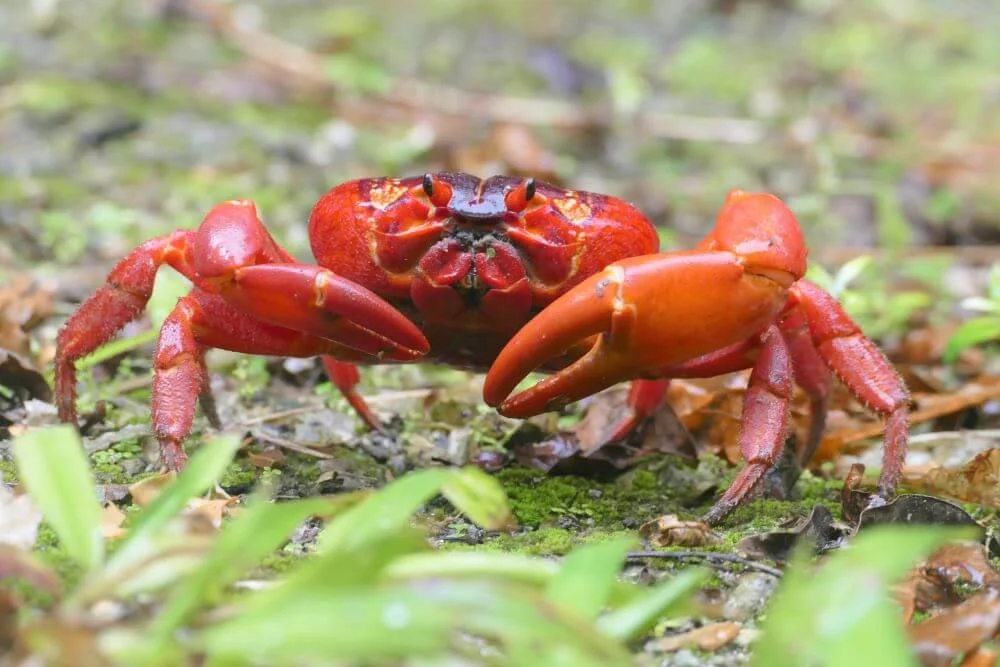Taxonomy and Classification:
The Red Crab (Gecarcoidea natalis) is a species of terrestrial crab belonging to the family Gecarcinidae. It is endemic to Christmas Island, a territory of Australia located in the Indian Ocean.
Physical Characteristics:
The Red Crab is known for its bright red carapace and legs, which give it its distinctive appearance. Adults typically have a carapace width of around 10 centimeters, although some individuals may grow larger. They have robust claws and legs adapted for terrestrial locomotion.
Habitat and Distribution:
The Red Crab is native to Christmas Island, where it inhabits various forested and coastal habitats. It is particularly abundant in the island’s rainforests but can also be found in areas near the coastline. During the breeding season, millions of Red Crabs migrate from the forest to the coast to spawn.
Behavior and Life Cycle:
Red Crabs are primarily nocturnal and spend the day hiding in burrows or under vegetation to avoid desiccation. They are omnivorous, feeding on a variety of plant matter, fallen fruits, and small invertebrates. The most notable behavior of Red Crabs is their annual mass migration, during which millions of individuals move from the forest to the coast to breed. This migration typically occurs during the wet season, triggered by the lunar cycle and rainfall.
Reproduction:
Breeding in Red Crabs usually occurs during the wet season, typically from November to January. During the migration to the coast, females release their eggs into the ocean, where they hatch into planktonic larvae. After spending several weeks in the ocean, the larvae undergo metamorphosis and settle back on land as juvenile crabs.
Conservation Status and Threats:
The Red Crab population on Christmas Island is considered stable, although habitat loss and fragmentation pose potential threats. Conservation efforts on the island focus on habitat protection, predator control, and managing human impacts to ensure the long-term survival of the species.
Ecological Importance:
Red Crabs play a crucial role in the ecosystem dynamics of Christmas Island. They contribute to nutrient cycling through their feeding activities and provide a food source for various predators, including birds and reptiles. Their annual migration also influences nutrient transfer between terrestrial and marine ecosystems.
In summary, the Red Crab is a unique and ecologically important species endemic to Christmas Island. Its annual mass migration is a remarkable natural spectacle and underscores the importance of preserving its habitat and ensuring its conservation.

